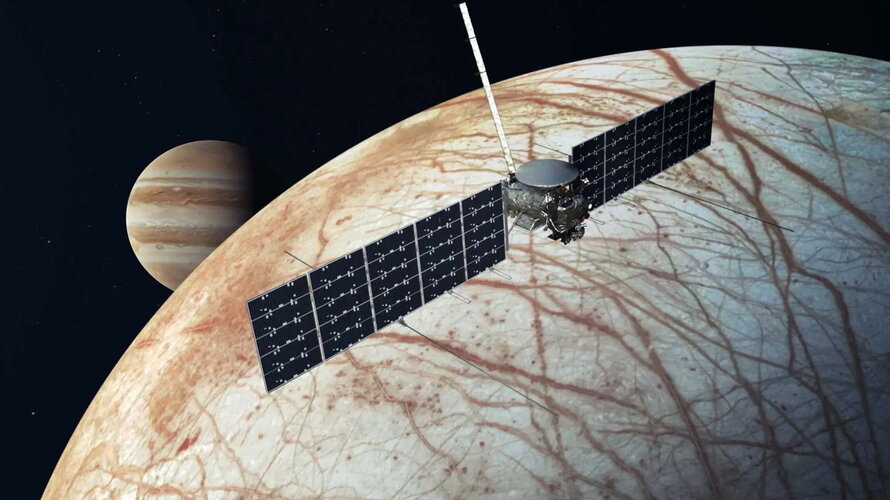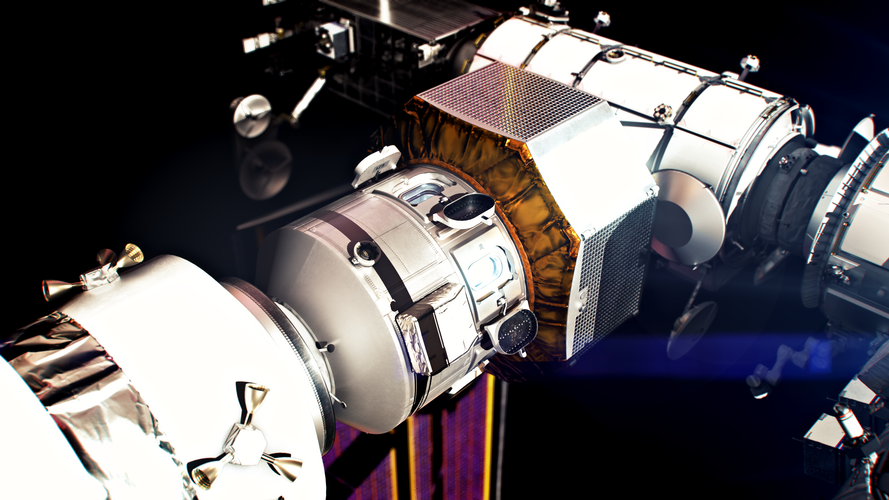
Copernical Team
ESA's Moonlight programme: Pioneering the path for lunar exploration

Imagine a near future where services such as satellite navigation, video conferencing, and file sharing are as seamless on the Moon as they are on Earth.
Ciseres: AI-powered satellites for rapid disaster response

This week, at the International Aeronautics Congress in Milan, ESA officially kicked off a new project called Ciseres, a small satellite mission designed to significantly improve crisis response times using artificial intelligence (AI). Part of ESA's Civil Security from Space (CSS) programme, Ciseres aims to enhance satellite capabilities to alert first responders and government officials within minutes of the occurrence of a disaster – such as floods, fires, landslides. The project is led and co-financed by Deimos, a European space tech company specialising in small satellite missions.
Juice and Europa Clipper: Dream team to Jupiter

What’s better than one spacecraft on the quest to search for life-friendly ocean worlds in the Jupiter system? Two! ESA’s Jupiter Icy Moons Explorer (Juice) is set to join forces with NASA’s Europa Clipper – launched on 14 October – to tackle one of the biggest questions in Solar System science.
Gateway refuelling module gets a boost

ESA and Thales Alenia Space have signed a contract amendment today at the International Astronautical Congress in Milan to extend the Lunar View refuelling module for the lunar Gateway.
NASA probe Europa Clipper lifts off for Jupiter's icy moon
 NASA probe Europa Clipper lifted off from the US Kennedy Space Center on Monday, bound for an icy moon of Jupiter to discover whether it has the ingredients to support life.
Lift-off took place aboard SpaceX's powerful Falcon Heavy rocket. The probe is set to reach Europa, one of Jupiter's many moons, in five and a half years.
The mission will allow the US space agency to uncover new det
NASA probe Europa Clipper lifted off from the US Kennedy Space Center on Monday, bound for an icy moon of Jupiter to discover whether it has the ingredients to support life.
Lift-off took place aboard SpaceX's powerful Falcon Heavy rocket. The probe is set to reach Europa, one of Jupiter's many moons, in five and a half years.
The mission will allow the US space agency to uncover new det Zero Debris Charter goes intercontinental
 Image:
Zero Debris Charter goes intercontinental
Image:
Zero Debris Charter goes intercontinental Living Planet Symposium 2025: time for abstracts

ESA’s Living Planet Symposium 2025 will take place from 23–27 June 2025 at the Austria Center Vienna, Austria. As this prestigious event approaches, now is the time to submit your abstracts for a chance to present your research on topics related to Earth observation from space, with a special focus on the theme: From Observation to Climate Action and Sustainability for Earth.
Is life possible on a Jupiter moon? NASA goes to investigate
 Is there anywhere else in our solar system that could support life? An imposing NASA probe is due to lift off on Monday on a five-and-a-half-year journey to Europa, one of Jupiter's many moons, to take the first detailed step toward finding out.
The Europa Clipper mission will allow the US space agency to uncover new details about the moon, which scientists believe could hold an ocean of liq
Is there anywhere else in our solar system that could support life? An imposing NASA probe is due to lift off on Monday on a five-and-a-half-year journey to Europa, one of Jupiter's many moons, to take the first detailed step toward finding out.
The Europa Clipper mission will allow the US space agency to uncover new details about the moon, which scientists believe could hold an ocean of liq Hera’s first images offer parting glimpse of Earth and Moon

ESA’s Hera mission for planetary defence has taken its first images using three of the instruments that will be used to explore and study the asteroids Dimorphos and Didymos.

